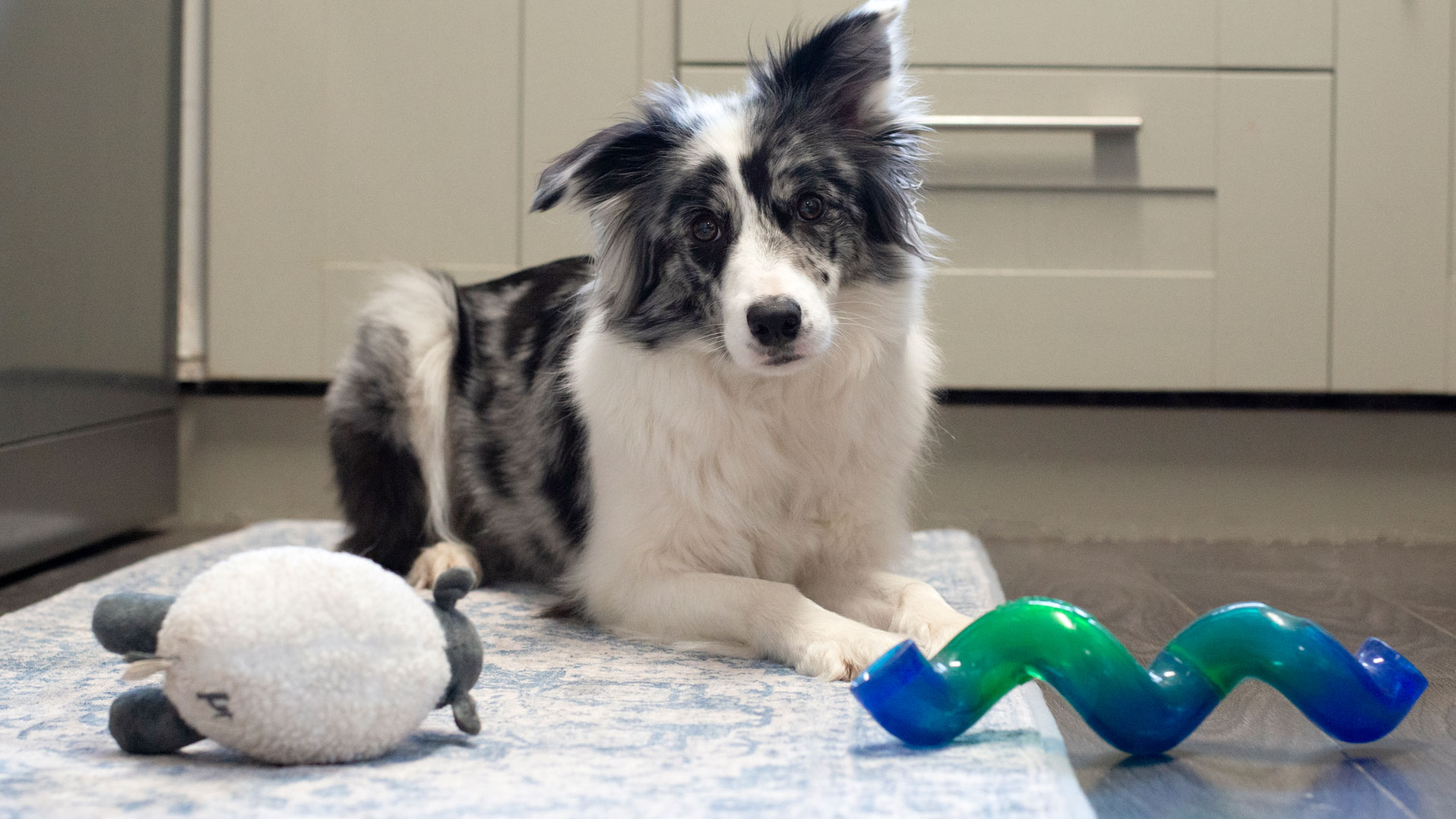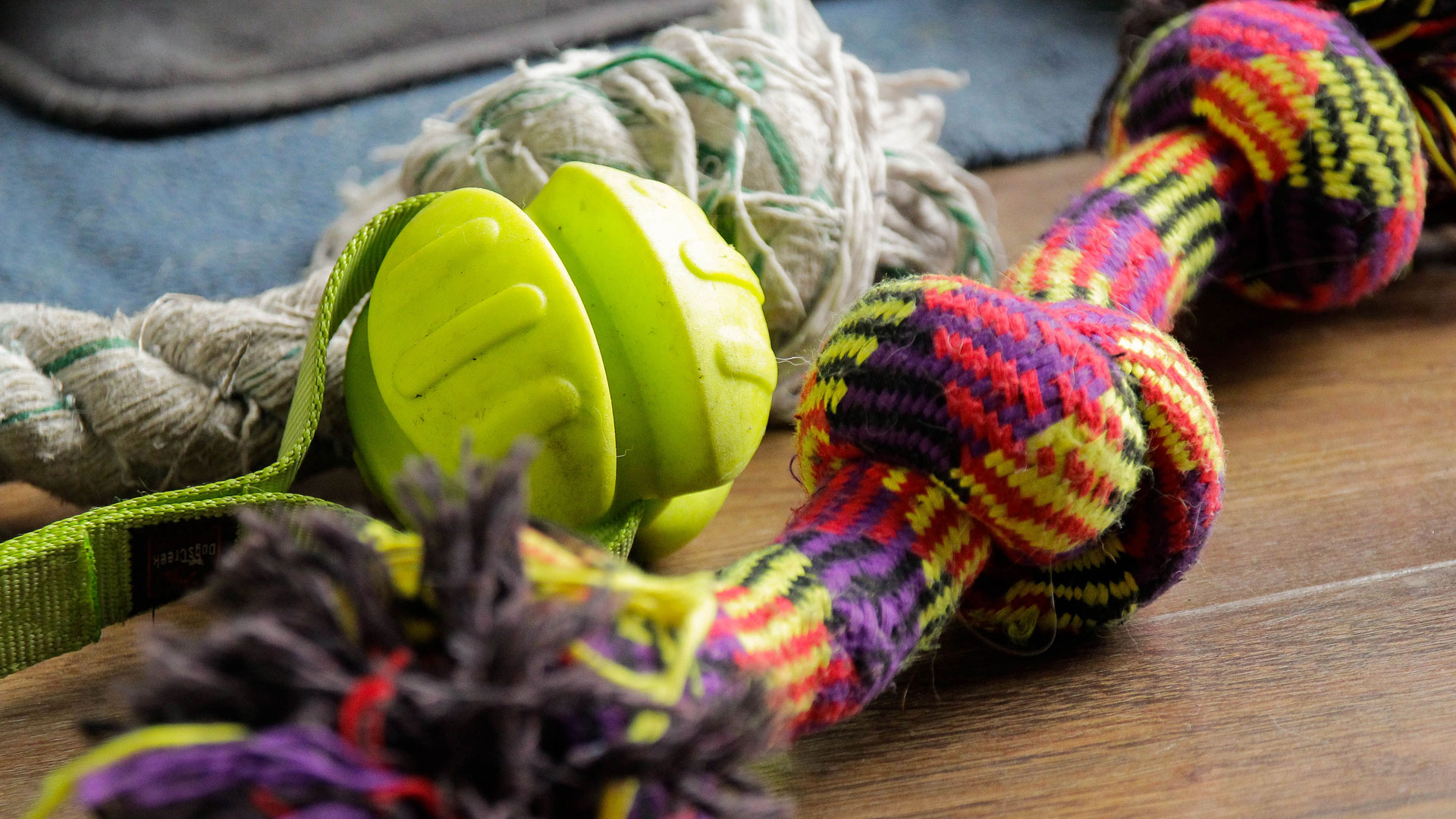I taught my dog this brain–teasing game, and it really tires her out
Got a dog that’s too clever for its own good? This game will really test their brain power

As the owner of a border collie, I’m very well acquainted with the feeling of bewilderment when my dog has once again outsmarted me. Whether it’s tricking her way into staying out in the garden for longer or literally throwing her toys at my head when we finish playing, Fenwick has made me more insecure in my own intelligence than any human ever has.
As any owner of a breed known for their high intelligence will understand, keeping these dogs mentally stimulated is an absolute necessity for their wellbeing. There are plenty of potential avenues for this, from trick training to scentwork to obedience and more. However, one of my favorite tools in my arsenal is called the ‘differentiation game’ – and all you need to play it is two or more of the best dog toys. Not only will it really work your dog’s brain, but it will also end up being a great party trick that you can show off to your friends and family.
So, what exactly is the differentiation game? Well, it’s where your dog is able to correctly pick out the particular toy that you’ve asked for from a selection of toys. So, if I laid out a sheep, a duck and a lion for Fenwick to choose from and told her to ‘Find Ducky’, she would understand that I’m asking for the duck and go to that toy.
Why play the differentiation game?
One of the benefits of the differentiation game is that it doesn’t involve any physical exercise, so it’s perfect for senior dogs and those suffering from an injury or recovering from surgery. Alternatively, it’s also a great option for when you as an owner can’t leave the house – whether that’s due to an injury or illness of your own or simply a spot of bad weather.
Using toys isn’t the only way to make use of differentiation. Lara Sorisi, an APDT-certified dog trainer and a championship dog trainer, enjoys using it as part of her training. “I like to use differentiation work with my intermediate and advanced level dogs, as it’s a great way to test their brains. Differentiation is essentially getting the dog to listen to a verbal cue and make a clear choice as to what behavior you’re asking of them – whether it’s a retrieve, a static behavior or a target exercise. It’s a really good exercise to strengthen your verbal cues, as it enables the dog to listen and make a conscious decision.
“When it comes to choosing how many behaviors to differentiate between, I will start with two and then work my way up to between three and four. I always make sure to pick behaviors that I know that they can do easily – I wouldn’t train a behavior using differentiation.”
Differentiation is so taxing on a dog’s brain that it earned Chaser the border collie the moniker of the ‘smartest dog in the world’. Working with her handler, psychology professor Dr. John Pilley, she was able to identify over 1,000 different toys throughout her lifetime. In this incredible video, Chaser is even able to select a brand new toy she’d never seen before out of a selection of seven using just inference.
PetsRadar Newsletter
Get the best advice, tips and top tech for your beloved Pets
In fact, this brain teasing game has caught the attention of multiple scientists and academics, as the Genius Dog Challenge invites owners to sign up their dogs to participate in their research if the dog knows the names of more than 10 objects or toys.
While Fenwick isn’t quite at Chaser’s level just yet, she can currently correctly identify objects from a selection of up to six different toys. I love watching her trying to figure out what toy she’s meant to bring me and she always conks out for a long nap after playing this game.

How do you teach the differentiation game?
If you’re interested in teaching this game to your dog, you can’t beat following in Dr John Pilley’s footsteps. According to this feature on the American Kennel Club website, Dr Pilley used ‘errorless learning’ to teach Chaser the names of her toys. This essentially means that you always set your dog up for success and they don’t get the chance to make the wrong decision. Thus, every time the dog chooses the right toy and gets rewarded, the correct name is further associated with the toy.
When I taught Fenwick this game, the main reinforcement I used was a fun game of Tug with the toy, as she finds that highly reinforcing. However, it’s best to find what your dog finds most rewarding – whether that’s a retrieve game, chasing a toy along the floor, or a really yummy treat.
Follow these steps to teach your dog how to learn the names of its toys.
1. Choose & name your first toy
Choose a toy with a distinct shape (avoid anything that looks too similar to another toy) and choose a name that can be clearly understood. Early on, I ran into a problem with the names ‘Dino’ and ‘Donut’, as they sounded too similar. I’ve also found that two-syllable names seem to be the easiest for Fenwick to understand and identify as well, so I’ll extend names such as ‘Sheep’ and ‘Frog’ into ‘Sheepy’ and ‘Froggy’ instead.
2. Introduce the first toy
According to his daughter Bianchi, Dr Pilley would introduce a toy by showing it to Chaser, saying ‘Catch Blue’ and throwing it to her. He’d then put it in front of her and say ‘Find Blue’. When she was able to retrieve the toy from another room, he’d know that it was time to move on.
3. Introduce a second toy
I would really recommend spending plenty of time on the previous step of this process before you add in a second toy. In hindsight, I think that I initially added too many toys in too quickly, as Fenwick went through a stage of getting confused when playing this game. However, when you think that your dog is ready, introduce a second toy using the same process as the first.
4. Introduce the differentiation
Now, here’s the fun part! Place the two toys a decent distance apart (around 1-2 meters) and ask your dog to find one of them. Again, I would recommend that you only do this when you feel very confident in your dog’s understanding of the two separate names, as you want to set your dog up for success.
If your dog chooses the correct toy, give them heaps of praise and reward them with treats or their favorite type of play. If they get the toy wrong, you’ve introduced the differentiation aspect too early and you’ll have to go back to teaching the names separately. Make sure you don’t react negatively if your dog doesn’t get the toy right, as you want to keep this a fun and positive experience for both of you.
Find other advice on training your dog with our guide covering how to stop your dog from jumping up.
Louise Carey is a freelance writer and the Editor of sister website Top Ten Reviews. She has been working in publishing for seven years, contributing to publications including The Independent, TechRadar, Digital Camera World and more. As the proud pet parent of a reactive border collie with a food allergy, it’s been necessary for Louise to explore a variety of fun and exciting ways to enrich an energetic dog that can’t always go on walks. She’s passionate about sharing the information she’s learned to help other pet owners as well.

